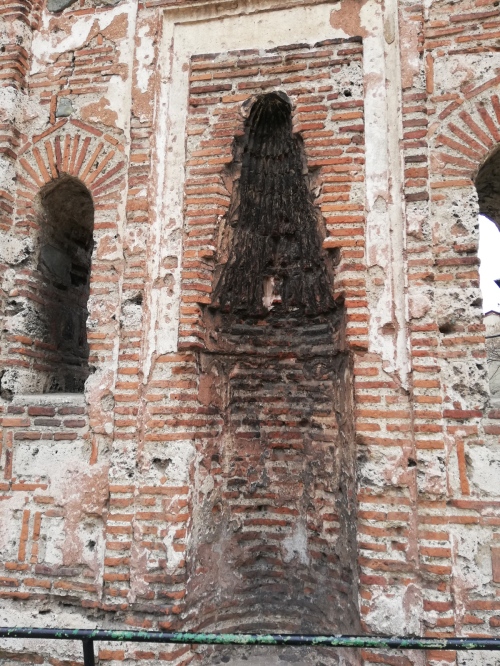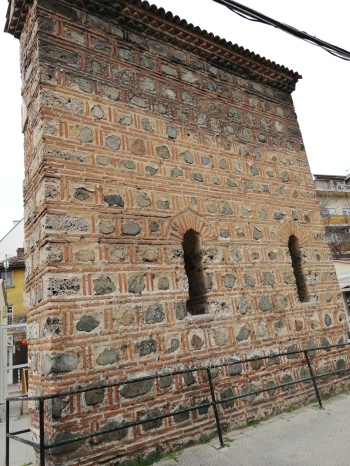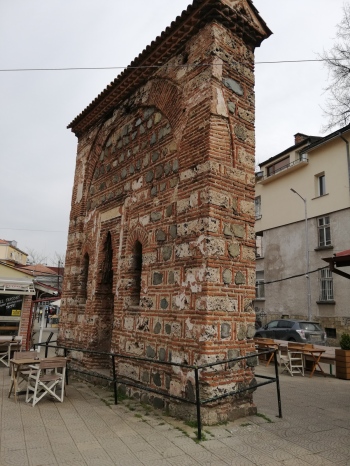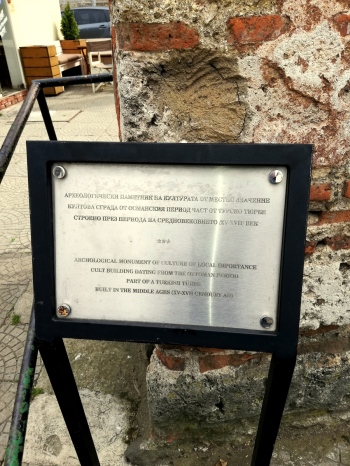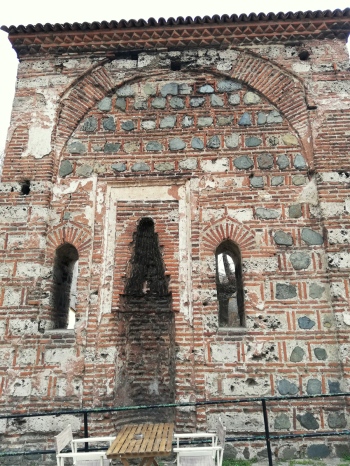Roman Wall
Location / GPS: 42.68407764466994, 23.33011945601125
Objects nearby: Faculty of Biology, Sofia University and Roman Wall Market
Public object / Private object: Public, permanent access
 Roman Wall
Roman WallYou probably think that the “Roman Wall” is a monument of Roman heritage, but this is far from the reality. It is the name of a remnant of a square Ottoman religious architectural monument from the 16th century, located on Stara Stena Street in the Lozenets district. The wall is characterized by a typical Ottoman construction, called cellular - laid stone in a cage built of bricks. There are two openings, resembling windows with a niche between them, and at the top there is a brick toothed cornice.
There are two main theories about the purpose of the wall. According to the first, it is supposed to have played the role of a tombstone in memory of a rich Turk, because before the Liberation the wall was located in the Turkish cemetery. According to the second theory, the wall was a place of prayer before leaving for God's tomb ("namazgâh"). Large stones were placed around the wall to help those embarking on the Hajj get on their horses.
In 1957, „The Old Wall” was restored and declared a cultural monument. Today, the building is an integral part of the market known as the "Roman Wall".
Sources:
Source 1
Source 2
Source 3
